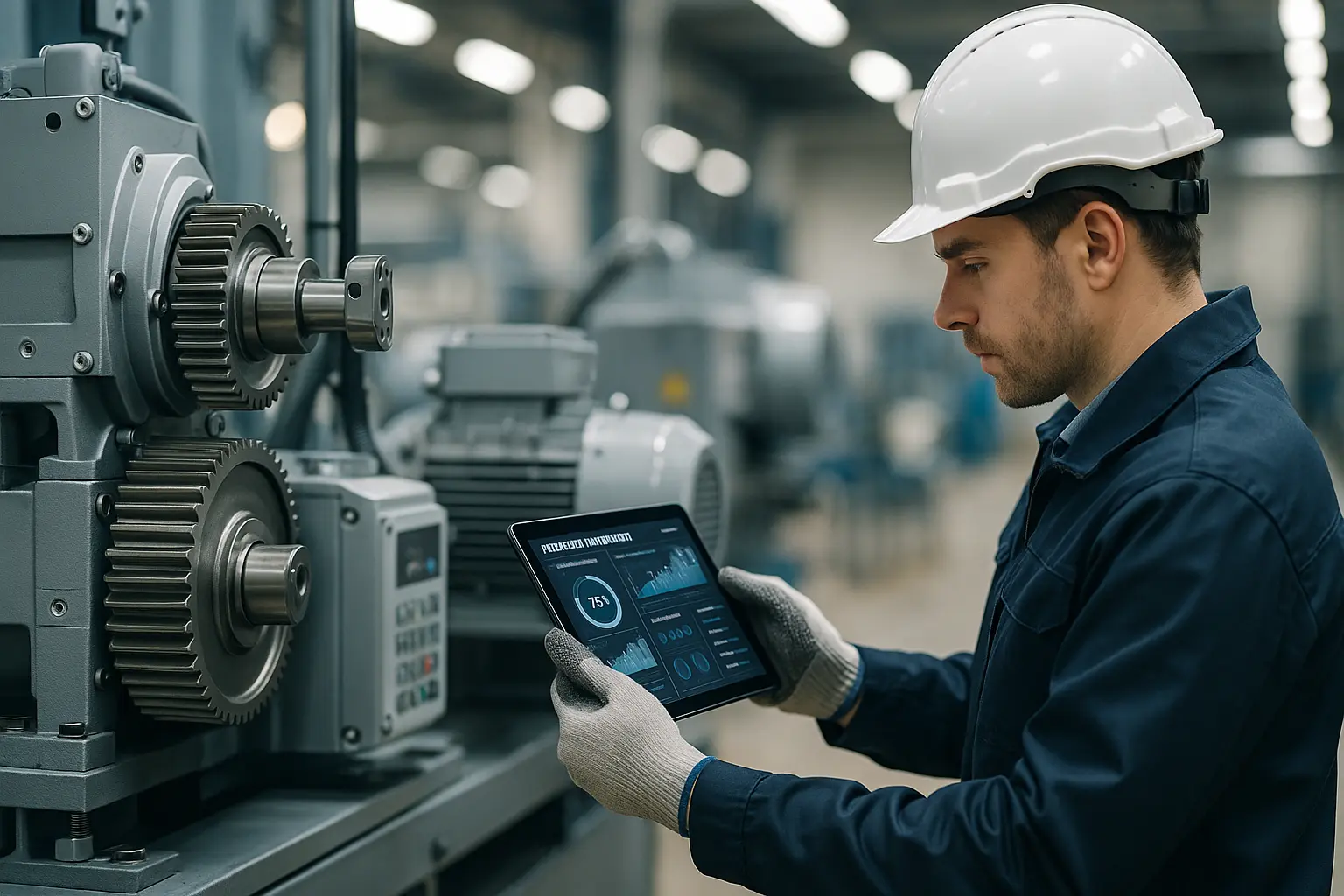In today’s rapidly evolving technological landscape, staying ahead of potential failures is not just an aspiration—it’s a necessity. As we delve into the complexities of maintaining assets, the word “downtime” resonates with every professional striving for efficiency. Predictive maintenance (PdM) has emerged as a beacon of innovation, reshaping strategies across industries and empowering us to predict equipment performance before it causes costly disruptions.
Our mission is clear: harness data and analysis to anticipate failures, optimize maintenance, and drive down operational costs. By embracing a modern approach, we aim to transform reactive fixes into proactive solutions. In this article, we’ll explore essential steps to implement an effective PdM program that improves asset longevity and boosts organizational performance.
## Understanding Predictive Maintenance
predictive maintenance (PdM) is a game-changer in the realm of asset management. Unlike traditional maintenance methods that are either preventive or reactive, PdM leverages advanced technologies and sensors to monitor equipment health continuously. By analyzing real-time data, we can predict potential failures, allowing for timely intervention and reducing unplanned downtime.
Imagine the possibilities when you can foresee failures before they occur. PdM equips us with the capability to schedule maintenance activities precisely, minimizing disruptions and ensuring optimal use of resources. The heart of this process lies in data—the lifeblood of predictive strategies. Integrating software and sophisticated algorithms, PdM processes vast amounts of information, translating it into actionable insights.
At its core, PdM is about being informed and prepared. It eliminates the guesswork from maintenance and empowers decision-makers to devise a comprehensive strategy. With a focus on performance, this forward-thinking approach ensures that every piece of equipment operates at its peak for as long as possible. As we embark on this journey, it’s crucial to make PdM an integral part of our organizational culture.
## The Role of Data and Analytics in Predictive Maintenance
Data reigns supreme in the world of predictive maintenance. Without it, our equipment monitoring efforts would be akin to navigating a ship without a compass. The complexity of modern assets demands a robust analysis framework that captures and interprets a myriad of variables.
We begin by identifying key performance indicators (KPIs) relevant to our operations. These metrics serve as the foundation for analyzing asset health, enabling us to predict failures with precision. By employing sensors, we collect real-time data, feeding it into advanced software systems designed to interpret patterns and anomalies.
Our strategy hinges on transforming raw data into meaningful insights. This requires a seamless integration of technology and human judgment. While algorithms excel at detecting trends, it takes expert knowledge to translate those trends into actionable steps. We must continuously refine our predictive models, adapting to changing conditions and emerging challenges.
The beauty of PdM lies in its ability to evolve. As we gather more data and refine our analysis, our predictions become more accurate, further reducing unexpected downtime. By embracing data-driven maintenance, we not only enhance operational performance but also position ourselves for success in an ever-competitive landscape.

## Designing a Predictive Maintenance Program
Crafting a successful predictive maintenance program requires a holistic approach, intertwining technology, data, and human expertise. Our first step is to conduct an asset assessment, identifying which pieces of equipment are most critical to our operations. This prioritization ensures that our resources are allocated efficiently, focusing on areas with the highest potential impact.
Next, we establish a monitoring framework, integrating sensors to track key performance indicators. The goal is to create a real-time stream of data that provides insights into asset health. These insights inform maintenance schedules, allowing us to intervene before failures occur.
A successful PdM program also involves cross-departmental collaboration. Maintenance teams, IT professionals, and management must work in unison to ensure a seamless flow of information and decision-making. Clear communication channels and shared objectives are essential to achieving our predictive goals.
Ultimately, the success of our program hinges on continuous improvement. By regularly reviewing performance metrics and refining our strategy, we can adapt to new challenges and enhance our predictive capabilities. The result is a maintenance ecosystem that is both proactive and resilient, reducing costs and maximizing uptime.
## Implementing and Fine-Tuning Predictive Maintenance Strategies
Implementation is where theory meets practice. As we roll out our predictive maintenance strategies, the emphasis is on scalability and adaptability. We start by deploying pilot projects, testing our assumptions and refining our models. These initial steps provide valuable feedback, allowing us to make informed decisions before full-scale implementation.
The key to success lies in flexibility. As we gather more data, our analysis becomes more nuanced, enabling us to adjust our strategies in real-time. We must remain open to new technologies and methodologies, integrating them into our existing framework to enhance our predictive capabilities.
Training is another vital component of our implementation process. Ensuring that our teams are equipped with the skills and knowledge to navigate advanced software systems is paramount. Ongoing education fosters a culture of innovation, empowering our workforce to leverage the full potential of PdM.
Finally, we establish a feedback loop, continuously evaluating the effectiveness of our strategies. Regular audits and performance reviews provide insights into areas for improvement, ensuring that our program remains cutting-edge and effective. By embracing a dynamic, iterative approach, we position ourselves as leaders in the realm of predictive maintenance.
As we look ahead, the promise of predictive maintenance is undeniable. It represents a paradigm shift, moving us from reactive fixes to proactive solutions. By harnessing the power of data and analysis, we can anticipate and prevent failures before they disrupt our operations.
Our journey is one of continuous learning and adaptation. As technology evolves, so too must our strategies. Embracing change, fostering collaboration, and prioritizing innovation, we pave the way for a future where maintenance is synonymous with efficiency and reliability.
By committing to a comprehensive predictive maintenance program, we not only safeguard our assets but also drive sustainable growth. The path may be challenging, but the rewards are transformative—reduced downtime, optimized performance, and a stronger competitive edge.
In this new era, the choice is clear. Predictive maintenance is not just an option; it’s the future of asset management. Together, we embark on this exciting journey, equipped with the tools and vision to redefine what’s possible.
FAQ
What is predictive maintenance and how does it differ from traditional maintenance methods?
Predictive maintenance is a proactive approach that utilizes data analysis and machine learning techniques to predict equipment failures before they occur. Unlike traditional maintenance, which operates on a fixed schedule or after a breakdown, predictive maintenance focuses on anticipating issues, thereby minimizing downtime and extending equipment life.
What are the initial steps to take when implementing a predictive maintenance program?
The first steps include assessing your current maintenance processes, identifying critical assets, and collecting historical data on equipment performance. This foundational data is crucial for developing accurate predictive models. It’s also important to establish a multidisciplinary team to oversee the project.
Which technologies are essential for setting up an effective predictive maintenance system?
Key technologies include Internet of Things (IoT) sensors for real-time data collection, machine learning algorithms for predictive analytics, and cloud-based platforms for data storage and processing. These technologies work in tandem to provide insights into equipment health and predict potential failures.
How can companies ensure the accuracy of their predictive maintenance models?
To ensure model accuracy, companies should continuously refine their algorithms by incorporating new data and feedback. Regularly validating the models against real-world outcomes and adjusting parameters as needed can also improve accuracy. Collaboration with data scientists and domain experts can further enhance model reliability.
What are the primary challenges companies might face when implementing predictive maintenance, and how can they overcome them?
Common challenges include data quality issues, resistance to change from employees, and the initial costs of technology adoption. Companies can overcome these by investing in robust data management systems, fostering a culture of continuous improvement, and conducting thorough cost-benefit analyses to demonstrate the long-term value of predictive maintenance.


